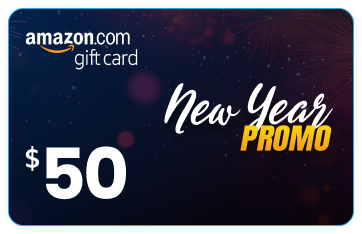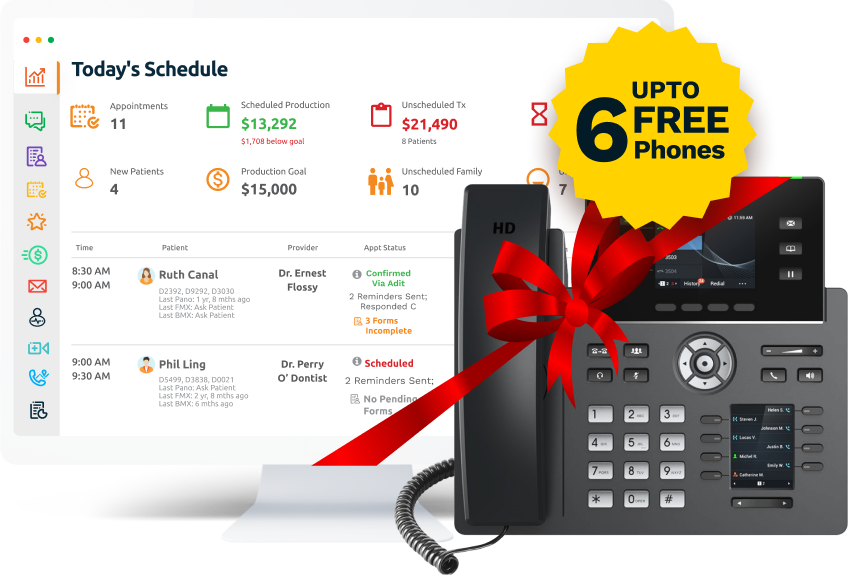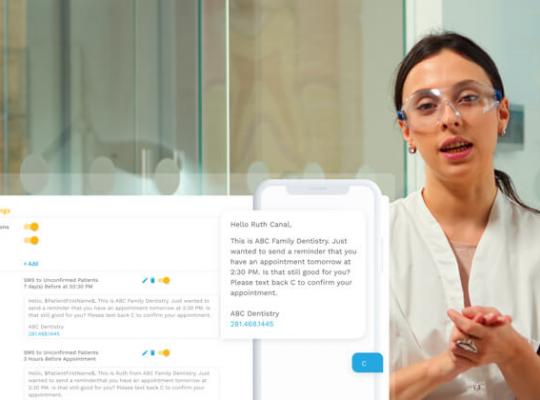Ends in
ends in 125 Days

ends in 125 Days

ends 11 July
Dental Telemedicine: A Digital Revolution in Dental Care

The healthcare landscape has significantly transformed in recent years, with telemedicine emerging as a pivotal force. While this technology has made strides across every medical field, its integration into dentistry marks a new era of patient care. Teledentistry software has become essential to modern dental practitioners, revolutionizing how they deliver oral healthcare.
Explore how dental telemedicine is transforming the dental field, its benefits, and why your office should integrate it into your dental practice management solution to take your operations to the next level.
The Evolution of Teledentistry Software

Telehealth software is not a new concept and can be traced back to the early days of telecommunication. However, its application in dentistry has only gained traction in the last decade. In the past, oral healthcare services were confined to physical offices where patients had to visit for even minor consultations. Thanks to the explosion of digital communication technologies, teledentistry has completely changed how dental patients access care.
The COVID-19 pandemic brought extraordinary challenges to dental practices, forcing many to close their doors, and creating a backlog of patients needing care. Teledentistry software provided a solution, allowing providers to offer virtual consultations, creating opportunities to address urgent oral healthcare cases despite limited access, and maintaining communication with patients during lockdowns. This sudden shift kept many offices financially afloat and highlighted the advantages of integrating telemedicine as a standard dental care feature.
The Benefits of Teledentistry Software
Telemedicine in dentistry offers numerous advantages for both patients and dental professionals, transforming the way oral health care is delivered. This technology has increased the popularity of remote consultations and support so that dental practices can enhance accessibility, improve patient engagement, and streamline operations. This innovative approach not only meets the evolving needs of patients but also empowers dental teams to deliver high-quality care more efficiently.
Let’s explore some of the key benefits that dental telemedicine brings to the table.
Increased Accessibility
One of the most significant benefits of virtual dental appointment software is its ability to increase accessibility to care. Telemedicine breaks down geographical barriers, providing patients in rural or underserved areas with access to dental care that might have been previously unattainable. For instance, a patient living hours away from the nearest dental clinic can consult with a qualified dentist without the need for long-distance travel. This capability is particularly beneficial for emergency consultations, where timely access to care can make a significant difference in outcomes.
Plus, telehealth consultations help practices expand their services to reach more patients who may have difficulty visiting in person due to mobility issues, time constraints, or lack of transportation. By offering virtual dental appointments, dentists can significantly expand their patient base and improve overall public health.
Cost-effectiveness
Telemedicine can be a cost-effective alternative for both patients and providers. For patients, it eliminates the costs associated with travel, such as fuel, parking fees, and time off work. For dental practices, telemedicine reduces overhead costs related to in-office visits, such as facility maintenance and staffing for additional appointments.
Also, telemedicine can increase revenue by allowing clinics to see more patients in a shorter amount of time. With efficient scheduling and fewer cancellations, dentists can maximize their productivity and provide better care to a larger number of patients.
Improved Patient Engagement

Patient engagement is critical to successful dental care, and teledentistry software can significantly enhance this aspect. With virtual consultations and follow-ups, patients can maintain regular communication with their dental providers, leading to better treatment compliance. Telemedicine allows dentists to monitor patients’ progress more effectively and provide timely advice, which can improve overall oral health outcomes.
Additionally, dental telemedicine supports ongoing education for patients. Dentists can use virtual platforms to educate about oral hygiene practices, treatment options, and preventive care, empowering them to take charge of their dental health.
How Lynnwood Dental Studio generated $227K in production with online scheduling and cut no-shows by 40% What happens when you level up your dental patient booking system? Tired of overpriced dental software that didn’t integrate with EagleSoft,...
Schedule a DemoEfficiency in Dental Practice Operations
Virtual dental appointment software can streamline operations within your office. Teledentistry software can simplify the appointment booking process, enabling patients to schedule online consultations easily, helping to further reduce no-shows and cancellations, and enhancing efficiency.
And, when bundled with cloud-based dental practice management software, your team can more easily adapt to the changing needs of patients. Whether it’s accommodating a busy professional’s schedule or providing after-hours consultations, this technology ensures that dental care remains accessible and convenient.
The Role of Telemedicine in Preventive and Routine Dental Care

Of course, teledentistry technology is not limited to just emergency care; it plays a crucial role in preventive and routine oral healthcare as well.
Routine Check-ups and Consultations
Patients can benefit from virtual dental appointments for routine check-ups and consultations. Virtual visits allow dentists to assess patients’ oral health without requiring a physical office visit. For instance, you can review a patient's dental history, discuss any concerns they might have, and provide recommendations based on these observations through an online consult. This approach is particularly beneficial for those who may have anxiety about visiting the dentist or have additional challenges accessing care outside their homes.
Post-treatment Care and Follow-ups
Another important benefit of dental telemedicine is its ability to facilitate follow-up consultations after procedures, reducing the need for in-office visits. This capability is especially valuable for patients recovering from dental surgery or treatment. Your team can monitor healing progress, answer aftercare questions, and provide guidance on post-treatment hygiene through virtual dental appointments, ensuring that patients receive the support they need during recovery.
Remote Patient Education and Consultations
Patient education is a fundamental component of preventive care. Teledentistry software features empower dentists to offer educational resources during online appointments. For instance, you could discuss oral hygiene practices, dietary recommendations, and preventive strategies, and share an informative video guide or downloadable care instruction form during the visit. By providing this education, dentists can help patients maintain better oral health and prevent future dental issues.
The Role of Cloud-Based Platforms

As dental telemedicine becomes more integrated into standard practice, cloud-based platforms like Adit will be essential. Cloud technology ensures that providers can access patient data and virtual consult features from anywhere, enhancing flexibility and scalability. Cloud solutions also enable dental teams to seamlessly adapt to changes in patient demand and integrate new technologies without significant upfront investments. As telehealth technology continues to evolve, cloud-based solutions will be vital in accommodating the changing needs of dental practices.
Scalability and Adaptability
Dental software should be designed with scalability and adaptability in mind. As dental practices grow and evolve, practice management solutions like Adit can accommodate their changing needs, making it the ideal partner for telehealth services. Whether a practice is looking to expand its services or enhance patient engagement, Adit provides the tools necessary to succeed in a rapidly changing digital landscape.
Patient-Centric Models of Care
As telemedicine becomes more prevalent, dental practices are shifting towards patient-centric models of care. This trend emphasizes personalized treatment plans that cater to individual patient needs and preferences. Telemedicine allows for more frequent and flexible communication between patients and dental providers, enabling practices to tailor their services and recommendations based on each patient’s unique circumstances.
Integration of Behavioral Health into Dental Care
Another emerging trend is the integration of behavioral health services into dental care, particularly for patients with dental anxiety or phobias. Dental telemedicine allows oral healthcare providers to collaborate with mental health providers to address patients' psychological barriers to care. This holistic approach can significantly improve patient engagement and treatment outcomes.
Regulatory Changes and Reimbursement Models
As telemedicine continues to gain traction in dentistry, regulatory changes, and reimbursement models will continue to evolve. Dental professionals must stay informed about local and national regulations regarding dental telehealth practices, including licensing requirements and reimbursement policies. Understanding these changes will enable providers to optimize their dental telemedicine services and ensure compliance, ultimately leading to improved patient care and practice sustainability.
Emphasis on Preventive Care through Telemedicine
Teledentistry software is shifting the focus of dental care from reactive to proactive, emphasizing preventive measures. Through regular virtual dental appointments, dentists can monitor their patients' oral health more closely, providing guidance on maintaining proper hygiene and recognizing early signs of dental issues. This proactive approach fosters a culture of preventive care, ultimately leading to healthier patients and reduced treatment costs which ensures dental practices will continue to thrive in an increasingly competitive market.
The Future of Dental Telemedicine and Practice Management

The future of telemedicine in dentistry looks promising, with several trends poised to shape the industry. As technology continues to advance, dental professionals must remain informed and adaptable to these changes to provide the best possible care for their patients.
Telehealth Integration with EHR Systems
As dental practices increasingly adopt telemedicine, the integration of telehealth services with Electronic Health Records (EHR) systems will become crucial. This integration ensures that patient data is easily accessible and up to date, facilitating better decision-making and care continuity. When telemedicine platforms can seamlessly communicate with EHR systems, it enhances workflow efficiency and improves patient care by providing comprehensive health records during virtual consultations.
Trends to Watch in AI and Emerging Technologies
Emerging technologies, such as artificial intelligence, are making significant strides in the field of dentistry. AI-powered platforms can analyze patient data and imaging to assist in diagnostics, identifying potential issues more accurately and quickly than human analysis alone. These systems can provide dental professionals with recommendations for treatment plans, improving efficiency and patient outcomes. As AI continues to evolve, its integration into dental telemedicine will likely lead to more personalized care and a higher level of precision in treatment.
Virtual Reality (VR) for Patient Comfort
Virtual reality is beginning to carve out its niche in dental care by offering innovative ways to alleviate patient anxiety during treatments. VR can provide immersive experiences that distract patients from discomfort and stress during procedures. For teledentistry, VR can also be used in educational settings, helping patients understand their treatment options and oral health better, and making a patient's telehealth experience more engaging and informative.
Augmented Reality (AR) for Enhanced Consultations
Augmented reality is another emerging technology that can enhance telemedicine consultations. Dentists can use AR to overlay digital images on physical spaces during virtual consultations, allowing for more interactive discussions about treatment plans. This technology can also help patients visualize their conditions and the proposed treatments, leading to better understanding and adherence to recommendations.
Remote Monitoring and Wearable Devices
The integration of remote monitoring tools and wearable devices into dental telemedicine is set to revolutionize patient care. These devices can track oral health metrics, such as gum health and plaque levels, providing dentists with real-time data about their patients’ conditions. By leveraging this information, dental professionals can offer timely advice and interventions, improving preventive care and patient outcomes.
Elevate Your Dental Practice with Adit's Telehealth Capabilities

Dental telemedicine is not merely a passing trend; it represents a significant digital revolution in the dental care landscape. Using teledentistry software can improve accessibility, enhance patient engagement, and streamline overall clinical operations. Integrating this cutting-edge technology as part of a larger dental practice management platform into routine care can pave the way for a more efficient, patient-centered approach in your office.
Discover the Benefits of Adit's Dental Software
Adit goes beyond just telehealth. Our platform streamlines all aspects of your practice management process, making it easier for you and your team to focus on what truly matters—your patients. With features that simplify communication, enhance patient engagement, and improve overall operational efficiency, Adit positions your practice for success in today's competitive dental landscape.
- Telemed: Conduct virtual consultations easily and securely from anywhere.
- Practice Analytics: Gain insights into practice performance and patient trends to maximize every aspect of your operations.
- Treatment Planning: Create detailed and effective treatment plans for patients that can improve case acceptance and compliance rates.
- CareCredit Integration: Connect qualifying patients with CareCredit's flexible financing options that ensure they can get the dental care they need.
- Online Scheduling: Empower patients to manage their appointments on their terms while minimizing no-shows and automating tedious confirmation and reminder processes.
- Patient Forms: Streamline onboarding with customizable digital forms that are easy to complete and automatically update in your EHR database.
- Adit Pay: Simplify billing and collections with automated payment processing and insurance claim tracking.
- Patient Text: Improve communication with automated reminders and follow-ups.
- Pozative Reviews: Track and manage patient feedback and reviews across all of your online accounts within a single dashboard.
- Adit Voice: Enhance team collaboration and patient interaction through a dedicated VoIP system that centralizes all patient communications under a single umbrella.
- Patient Recall: Maintain ongoing engagement with automated recall reminders supported by AI-driven analytics.
- Call Tracking: Discover what drives patient calls and enhance marketing campaign quality.
- Call Recording: Monitor interactions between your dental team and patients to improve treatment experiences.
- Comprehensive EHR Management: Automatically create, update, and organize all patient records in a centralized location.
- Unparalleled Scalability: Our platform grows with you, ensuring you can maximize the potential of your up-and-coming practice on demand.
- Email Marketing Campaigns: Engage with patients through targeted email communications.
It's time to bring your dental practice to the future and provide patients with the standard of care they expect. Adit Teledentistry Software features robust telehealth capabilities that can seamlessly integrate with your dental services. Don’t let your practice fall behind!
Book a free demo today and learn how our platform can not only enhance your telehealth services but also to transform your entire practice management experience.
more about Adit?
Access a full suite of patient communication tools with Adit! Texting, payments, reviews, & scheduling in one place.
Schedule a DemoAngela is a former English teacher turned marketing content specialist. Over the past 10 years, she’s developed marketing strategies to forge enduring bonds between B2B, B2C and SaaS companies and their clients through holistic education, effective communication, and captivating storytelling that moves audiences to act.
Get a $25 Gift Card when you take a demo
Schedule a Demo
Get a $50 Gift Card
when you take a demo
Looks like you're out of bounds!
Hey there! Your current location falls outside Adit's area of operation. If this is unexpected, try disabling your VPN and refresh your page. For further assistance or to book a live demo, connect with us at 832-225-8865.
January 5 Amazon Demo Promo
Terms and Conditions
Last Updated: January 5, 2026Offer ends January 8, 2026, and is limited to prospective customers who sign an annual agreement before January 31, 2026. Gift card will be emailed to the company owner or established representative within 4 weeks of signing the annual agreement. Offer may not be combined with any other offers and is limited to one (1) gift card per office. Offer is not available to current customers or to prospective customers or individuals that have participated in a Adit demo during the prior six (6) months. Recipient is responsible for all taxes and fees associated with receipt and/or use of the gift card as well as reporting the receipt of the gift card as required under applicable federal and state laws. Adit is not responsible for and will not replace the gift card if it is lost or damaged, is not used within any applicable timeframe, or is misused by the recipient. Adit is not responsible for any injury or damage to persons or property which may be caused, directly or indirectly, in whole or in part, from the recipient’s participation in the promotion or receipt or use of the gift card. Recipient agrees to indemnify, defend and hold harmless Adit from and against any and all claims, expenses, and liabilities (including reasonable attorney’s fees) arising out of or relating to a recipient’s participation in the promotion and/or recipient’s acceptance, use or misuse of the gift card. This offer is sponsored by Adit Communications, Inc. and is in no way sponsored, endorsed or administered by, or associated with Amazon.
Thank You!
We appreciate your interest! Adit AI will be calling you in the next few minutes!
Why Adit?
Cut your software bill by up to 60% when you merge everything your dental office needs to run under one roof.
Centralize Communications
- Phones & TeleMed
- Emails & eFax
- Texting & Reminders
- Call Tracking and more!
Streamline Operations
- Patient Forms
- Online Scheduling
- Payments
- Reviews and more!
Boost Production
- Performance Dashboards
- Morning Huddle
- Claims & Collections
- Patient Profiles
- Follow Up Lists
- Year Over Year Metrics
Acquire More Patients
- Digital Marketing
- Website Design
- SEO
- Google Ads
- Facebook Ads
Ends in

and Get Free Phones for Life
Sign up by filling out the form







